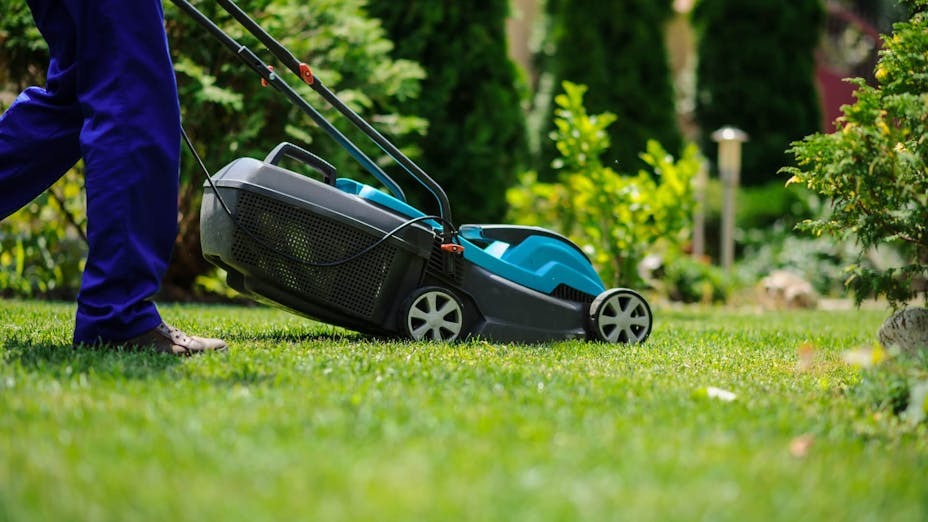
How Often to Mow a Lawn
If your lawn is a mess your mower and lawn mowing routine may be to blame. Get your grass cutting right and you'll make life easier and the lawn greener!
The Lawnsmith ‘One Third Rule’
Never remove more than one third of the grass blade on any one mowing.
If your lawn mower is set for a 1” cut then you must mow at or before the grass gets to 1 ½” whether that’s 4 days or 8 days between cuts. That means you only remove one third of the grass blade. You will not do any harm if you cut more frequently so long as your lawn mower and blades are in good condition.
If this rule means you have to do your grass cutting more often than you would like you can raise the lawn mowing height which will slow growth down. For example, you could set your lawn mower to cut at 1½”; you must then mow at or before the grass gets to about 2 ¼”. This may now mean mowing every 7 to 10 days depending on temperature and water availability.
Regardless of the mowing height never leave your lawn more than 10 to 14 days between cuts. If you have a lawn mowing service coming every two weeks just ask them to raise the mowing height so that you stay as close to the one third rule as possible.
The chances are in summer you won’t need to cut the grass much if it is very dry as there will be little growth. However, don’t go over the two weeks between cuts because some weed grasses will take advantage of the lack of lawn mowing and spread or seed profusely.
Lawn Mowing Little and Often
For 99% of us little and often means once a week. This will produce a much denser turf than if your grass cutting is every two weeks. A dense turf is the best looking and a great form of natural weed control as it prevents weed seeds from contact with the soil. If the seed doesn’t contact the soil then there is a very good chance that no weed grows; perfect! Follow these simple guidelines:
- When growth is good (usually spring & autumn) mow at least every 7 to 10 days if using a rotary and AT LEAST every 3 to 5 days if using a cylinder mower
- Mow at least every two weeks in dry summers if using a rotary and every week if using a cylinder mower
- THE LAWNSMITH RULE: Never remove more than one third of the grass blade on any one occasion
Thin patchy lawns are often the result of infrequent mowing or removing too much of the grass when you cut. Mow infrequently AND mow short and before long you won’t have a lot of lawn left to mow!